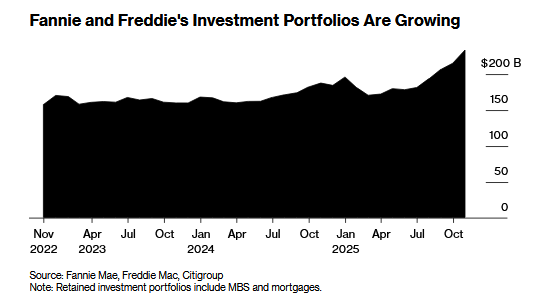 In an attempt to maintain the lockdown and their authority over our lives, politicians, health experts, and the mainstream media have been misusing some unusual analogies to describe the current economy.
In an attempt to maintain the lockdown and their authority over our lives, politicians, health experts, and the mainstream media have been misusing some unusual analogies to describe the current economy.
By using these analogies, our political overlords hope they can continue to keep the economy shut down, force companies to produce what the government forgot to purchase before the virus hit, and toss out trillions of dollars of handouts and bailouts to their friends. The results have been disastrous for an already badly weakened economy.
One: The Light Switch Analogy
One analogy that media analysts keep getting wrong is one in which pundits insist that the economy is nothing like a light switch and that it could be disastrous if we turn on the economy too quickly. These commentators apparently want to put a damper on the idea that allowing people freedom in the marketplace could lead to a dramatic improvement from our current state of mass unemployment.
It is true that our economy is much more complicated than a lighting system, but actually a free market economy can be turned on and rapidly recover from a shutdown or crisis. Such was the case in the US after World War II. The same was true of Japan and Germany despite their labor and capital being utterly destroyed by Allied bombing.
The light switch analogy is a favorite of journalists, such as Chuck Todd, as an attack on President Trump’s eagerness to open up the economy. Certainly, the shutdown is an economic disaster, but not for journalists who want to appear in the limelight as being concerned about public health and welfare. In reality, they love having people confined in their homes watching endless hours of the “news.”
But what is really needed right now is the freedom to flip that switch to the On position.
Two: The Humpty-Dumpty Analogy
Another analogy is that the economy is like Humpty-Dumpty, a character in a famous English children’s rhyme:
Humpty-Dumpty sat on a wall,
Humpty-Dumpty had a great fall.
All the king’s horses and all the king’s men
Couldn’t put Humpty together again.
This analogy of the economy is generally flawed, because putting the economy back together again all depends on how the government responds to an economic crisis. For example, the Harding administration responded to the crisis of 1920 with budget cuts and higher interest rates. The economy quickly recovered and the Depression of 1920–21 was lost to history. In sharp contrast, the Japanese government responded to the stock market bust in 1989 with sharp interest rate cuts, stimulus packages, and bailouts. The Japanese economy, once the envy of the world, has been mired in stagnation for more than three decades now.
In our current crisis, the Fed’s response of cutting interest rates to zero and quantitative easing is the same approach that caused this situation of a fundamentally weak economy, and it will not solve it. It will bolster banks and corporations in the short run but does nothing for the average Joe. This is obviously unfair, but it also doesn’t work. Market-driven interest rates efficiently allocate credit and provide benefits to savers. They also help an economy recover from a crisis by quickly driving the most inefficient companies out of business and encouraging saving.
Ultimately, we need not rely on the government (i.e., the “king’s men” putting Humpty Dumpty back together again). People acting freely in a marketplace could do it all by themselves. If only the government would let them.
Again, Government Failure
Media commentators and politicians employ these analogies to justify continued lockdowns and extensive government control over daily life. But if these people were truly concerned about public health, they would be reporting on things that people can do that mitigate the impact of the virus and get past the gloves, mask, and hand sanitizer routine. They would be reporting on what made other countries more successful in quelling the pandemic. Finally, they would be reporting on the adverse health effects of the shutdown. Just Facts has recently calculated that the adverse health effects of the shutdown are worst than those of the virus:
Based on a broad array of scientific data, Just Facts has computed that the anxiety created by reactions to COVID-19—such as stay-at-home orders, business shutdowns, media exaggerations, and legitimate concerns about the virus—will destroy at least seven times more years of human life than can possibly be saved by lockdowns to control the spread of the disease. This figure is a bare minimum, and the actual one is likely more than ninety times greater.
On the one hand, individuals, businesses, and governments would all be experimenting with different approaches to save themselves, their customers, and their operations. Almost everything we have learned and successfully implemented from the virus crisis comes from observing the approaches of other countries, among the various states, and even of individual businesses.
On the other hand, the top-down approach has been an utter failure. At the beginning of the crisis, Fauci et al. told us not to worry about the virus. Then, when things got out of hand due to their recommendation, they pivoted to a lockdown-until-there’s-a-vaccine approach. They were totally wrong, and global vaccination is the closest thing to nuclear war in terms of the fragility of human existence.
The CDC claimed in the beginning that surface transmission was the key to controlling the COVID-19 virus and that we should wash our hands and bleach and disinfect surfaces and that masks were unnecessary. Now the CDC has reversed its position and claims that transmission occurs by airborne droplets and interpersonal contact, so that masks and social distancing are of significant importance. Federal expert advice has been a travesty and has made the situation worse, not better.
Finally, the federal government’s interference in markets has been a total failure and is likely to get worse. For example, the enhanced unemployment insurance benefits have resulted in many people not returning to their jobs because they would rather just sit home and collect benefits than go back to work and possibly catch the virus. Moratoriums on banks and landlords collecting their monthly fees are also unnecessary and dangerous. Like so many aspects of this crisis, people can forge agreements among themselves on how to best go forward.
If we continue down the government solution path, the American economy will look like Humpty-Dumpty after his fall, but if we go the free market economy route, the lights will turn on quicker than you think.
Full story here Are you the author? Previous post See more for Next postTags: newsletter



























